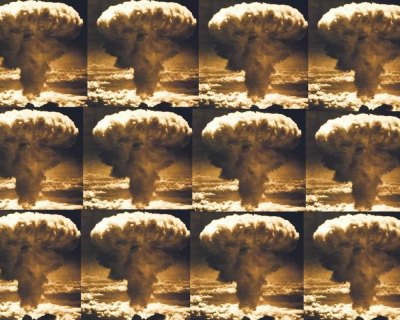70 years ago: Atom bomb dropped on Japan

That is how survivors described the atom bomb, which fell upon two cities in Japan 70 years ago this week. (See the description on the National Archives of the United Kingdom website.)
But even if we didn’t have written testimony, photographs and films, we would know about the bomb. Long after that week in August 1945, questions lingered about its aftereffects on civilization, diplomacy and the balance of power.
Consider the succession of events that led to the bomb drop:
1938: Three chemists in Berlin split the uranium atom. While it was clear that the energy released could power a bomb, there were still technical problems to overcome, notes the American Museum of Natural History website.
Concern in the U.S.: Even though America was not yet at war, the country raced to develop the atom bomb before the Germans did. In March 1939, George B. Pegram, professor of physics at Columbia University, arranged a meeting between Enrico Fermi, a noted Italian scientist, and the U.S. Navy, according to Encyclopedia Britannica.
Einstein’s letter: A letter dated Aug. 2, 1939, and signed by Albert Einstein, warned President Franklin Roosevelt: “It may become possible to set up a nuclear chain reaction in a large mass of uranium, by which vast amounts of power and large quantities of new radium like elements would be generated. Now it appears almost certain that this could be achieved in the immediate future.” The letter continued. “In view of this situation you may think it desirable to have some permanent contact maintained between the Administration and the group of physicists working on chain reactions in America.”
Despite this, Einstein was considered a “left leaning” political activist and in 1940 was denied the security clearance needed to work on the Manhattan project, according to the American Museum of Natural History.
The Manhattan Project takes shape: Gen. Leslie R. Groves was charged with leading the secret effort to build an atomic bomb, the "Manhattan Engineer District" or "Manhattan Project." Previously, research had taken place at various institutions across the country. Groves wanted a centralized lab. He chose a Berkeley, California, physicist, J. Robert Oppenheimer, to be scientific director, recounts the University of California, Berkeley website, Oppenheimer: A Life. (Ironically, Oppenheimer also had communist sympathies.) The new lab was placed in New Mexico and called the Los Alamos National Laboratory.
The first bomb: The first test was July 16, 1945, at the “Trinity” site, 60 miles northwest of Alamogordo, according to NewMexicoHistory.org, a website of New Mexico's Office of the State Historian.
Aug. 6, 1945: One month later, the first atomic bomb was dropped on Hiroshima. An estimated 66,000 were killed and an additional 69,000 were injured, according to the Avalon Project, Documents in Law, History and Diplomacy, on the Yale University website. On that day, President Harry S. Truman issued a statement describing the bomb’s power:
“That bomb had more than 20,000 tons of TNT. It had more than two thousand times the blast power of the British “Grand Slam,” which is the largest bomb ever yet used in the history of warfare…
“It is an atomic bomb. It is a harnessing of the basic power of the universe. The force from which the sun draws its power has been loosed against those who brought war to the Far East. …
“We are now prepared to obliterate more rapidly and completely every productive enterprise the Japanese have above ground in any city. We shall destroy their docks, their factories and their communications. Let there be no mistake; we shall completely destroy Japan’s power to make war.”
(See the complete statement on the Harry S. Truman Library website.)
Aug. 9, 1945: The second bomb was dropped on Nagasaki. This time, 39,000 were killed and 25,000 more were injured, the Yale website said. (Note: More died subsequently. According to Children of the Atomic Bomb, a UCLA website, by December 1945, an estimated 60,000-80,000 were dead in Nagasaki; 90,000-120,000 were dead at Hiroshima.)
Sept. 2, 1945: Japanese officials formally surrendered on the deck of the USS Missouri in Tokyo Bay.
In retrospect: At the time, many supported Truman's decision to drop the atomic bombs. In years since, however, differing views have emerged. As recounted by The National Archives of the United Kingdom: "Later commentators have questioned whether dropping the bomb was the only option open to Truman and whether an attack on unarmed civilians was the right decision to take."
Sources:
- American Museum of Natural History: The Manhattan Project.
- Avalon Project, Yale University Law School: The Atomic Bombings of Hiroshima and Nagasaki - Total Casualties.
- Columbia University: Collections of Correspondence, George B. Pegram.
- Encyclopedia Britannica: The Manhattan Project.
- Franklin Roosevelt Library: Letter signed by Albert Enstein.
- The National Archives, United Kingdom: Hiroshima and Nagasaki, spectators' accounts.
- The National Archives, United Kingdom: Harry Truman and the atomic bomb.
- U.S. National Archives: The War is Over.
- Harry S. Truman Presidential Library: Statement of President Truman, Aug. 6, 1945.
- Library of Congress: American Treasures --Trinity Test Nuclear Explosions.
- New Mexico Office of the State Historian: Detonation of the First Atomic Bomb at the Trinity Site, 1945.
- UCLA: Children of the Atomic Bomb
Related:
Four phrases associated with the Cold War
If you would like to comment, contact StudyHall.Rocks or like us on Facebook and tell us what you think.

